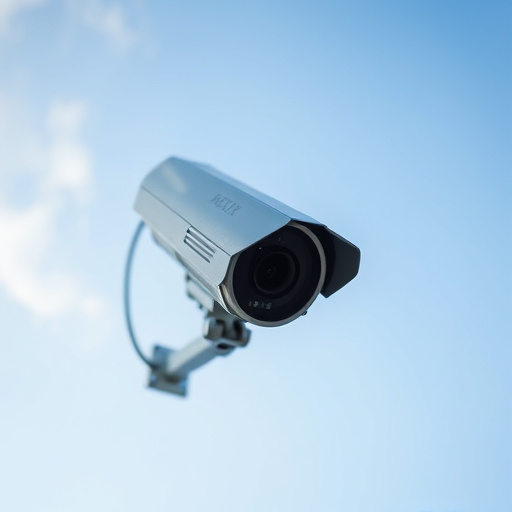Remote viewing technology, previously associated with psychic abilities, has evolved with electromagnetic signal scanning, as demonstrated by the Remote Viewing Nanny Surveillance System. This system uses sensors and algorithms to monitor activities discreetly, offering real-time video, audio, and alerts for parents' peace of mind. However, ethical considerations like privacy must be addressed. Setting up this system involves strategic placement of infrared cameras and signal scanners, secure network connections, and user-friendly software with strong encryption. Regular testing ensures optimal performance and security.
Unveil the unseen with our comprehensive guide on hidden lens electromagnetic signal scanning. Explore the intriguing world of remote viewing, understanding the fundamentals of electromagnetic signals that enable extraordinary perception. Discover cutting-edge scanning technology and its diverse applications, from enhancing security with a nanny surveillance system to empowering individuals with unprecedented monitoring capabilities. Learn how to set up your own remote network, weighing the benefits against ethical considerations in this revolutionary domain.
- Understanding Remote Viewing: The Basics of Electromagnetic Signals
- Unveiling the Hidden Lens: Scanning Technology and its Applications
- Implementing a Nanny Surveillance System: Benefits and Ethical Considerations
- Setting Up Your Own Remote Monitoring Network: A Step-by-Step Guide
Understanding Remote Viewing: The Basics of Electromagnetic Signals
Remote viewing, a captivating concept often associated with psychic abilities, involves perceiving distant locations or events through an unseen medium. In the context of modern technology, this idea is applied in innovative ways, especially with the advent of advanced scanning and sensing systems. One such application is in electromagnetic signal scanning, where remote viewing takes on a scientific form. Electromagnetic signals, generated by various devices and sources, carry unique signatures that can be detected and analyzed from afar.
These signals play a pivotal role in the operation of a Remote Viewing Nanny Surveillance System, designed to monitor activities discreetly and efficiently. By capturing and interpreting these signals, the system can provide valuable insights into environmental conditions without physical intrusion. Understanding electromagnetic signals is key to unlocking the potential of remote viewing technologies, enabling safer, more comprehensive surveillance while adhering to privacy considerations.
Unveiling the Hidden Lens: Scanning Technology and its Applications
Unveiling the Hidden Lens represents a significant leap forward in scanning technology, offering unprecedented capabilities in remote viewing and nanny surveillance systems. By harnessing electromagnetic signals, this innovative approach transcends traditional visual observation, enabling users to gather intelligence or monitor activities from a distance. The underlying technology leverages advanced sensors and sophisticated algorithms to detect and interpret subtle energy fields, painting a detailed picture of the target environment.
Applications are vast and varied. In the realm of nanny surveillance, parents can remotely ensure their child’s safety, while in remote viewing, professionals gain insights into inaccessible or hazardous locations. This technology promises to revolutionize security protocols, offering non-intrusive yet highly effective monitoring solutions tailored for modern living.
Implementing a Nanny Surveillance System: Benefits and Ethical Considerations
Implementing a remote viewing nanny surveillance system offers several benefits for parents seeking peace of mind. With modern technology, caregivers can monitor children’s activities in real-time, ensuring their safety and well-being. This approach is especially valuable for working parents who rely on nannies to care for their young ones during busy days. The ability to remotely view and interact with the nanny and children through live video feeds, audio communication, and even automated alerts can significantly enhance supervision.
However, ethical considerations must be addressed when employing such a system. Privacy is a paramount concern; both parents and caregivers should understand and agree on data collection practices. It’s crucial to establish clear boundaries regarding what will be monitored and for how long. Additionally, transparency about the surveillance system’s existence ensures that all parties involved are comfortable with the arrangement, fostering trust and open communication within the family unit.
Setting Up Your Own Remote Monitoring Network: A Step-by-Step Guide
Setting up your own remote monitoring network, specifically for a remote viewing nanny surveillance system, involves several key steps to ensure effective and discreet operation. Begin by selecting suitable equipment, including high-quality cameras with infrared capabilities for night vision, as well as a reliable electromagnetic signal scanner to detect any unusual activity. Position these devices strategically around the area you wish to monitor, ensuring comprehensive coverage without obstructing lines of sight.
Next, establish a secure network connection. Utilize encrypted Wi-Fi or a dedicated Ethernet cable to transmit video and sensor data directly to your control center. Configure a user-friendly software platform that allows live viewing, recording, and remote access from any location with an internet connection. Prioritize data privacy by implementing strong encryption protocols and access controls to safeguard sensitive information. Regularly test the system’s performance and update firmware to maintain optimal functionality and security.
The hidden lens of electromagnetic signal scanning offers a fascinating glimpse into remote viewing and monitoring capabilities. By understanding the basics of electromagnetic signals and utilizing advanced scanning technology, individuals can implement powerful tools like nanny surveillance systems. These systems provide enhanced safety and peace of mind while also raising ethical considerations that must be carefully navigated. For those interested in setting up their own remote monitoring networks, a step-by-step guide is provided, offering a comprehensive starting point for exploring this innovative technology.
